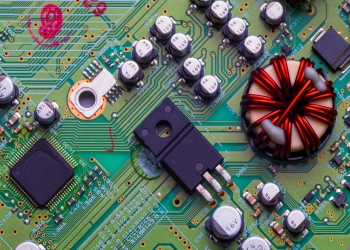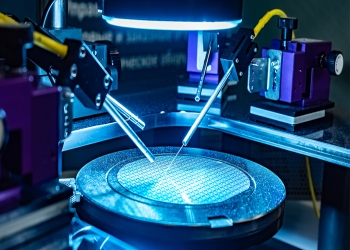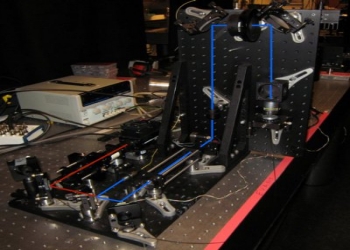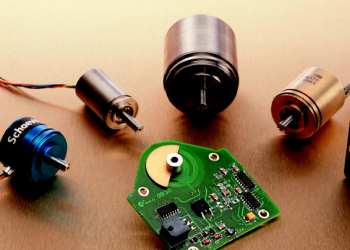ASSEMBILES OF (B6C)2 SERIES
| PDDN-Series | Type Applicationgs | PDDN-Notes |
| PDDN-Na | PDDN-Na | na |
| Type | Cooling Method | Device Type | Rate Output Current IRMS(A) | Cooling Condition | Device Voltage (V) | Outline |
|---|---|---|---|---|---|---|
| PDDN-*(B6C)2x-xxx-xxxFA | Air Cooling | PDDN-Modules | 80-150 | PDDN-Wind speed ≥ 6m/s ambient temperature ≥ 40 ℃ | 100-2000 | 2x-xxx-xxxFA |
| PDDN-*(B6C)2x-xxx-xxxFB | Air Cooling | PDDN-Modules | 200-260 | PDDN-Wind speed ≥ 6m/s ambient temperature ≥ 40 ℃ | 100-2000 | 2x-xxx-xxxFB |
| PDDN-(B6C)2x-xxx-xxxFE | Air Cooling | PDDN-Capsule types devices | 800-1200 | PDDN-Wind speed ≥ 6m/s ambient temperature ≥ 40 ℃ | 100-2000 | 2x-xxx-xxxFE |
| PDDN-(B6C)2x-xxx-xxxFF | Air Cooling | PDDN-Capsule types devices | 1500-2000 | PDDN-Wind speed ≥ 6m/s ambient temperature ≥ 40 ℃ | 100-2000 | 2x-xxx-xxxFF |
| Remark | PDDN-Busbar should be connected outer |
Overview of Assembiles of (B6C)2 Series
Assembiles of (B6C)2 series are highly symmetrical and stable molecular structure. The strong covalent bond between boron and carbon endows it with excellent chemical stability, enabling it to maintain its structure and properties in various extreme environments. This stability makes the (B6C) 2 series assemblies potentially valuable in various fields such as materials science, electronics, catalysis, and more. In addition to stability, the (B6C) 2 series assembly also possesses unique electronic properties. The electronic arrangement of boron and carbon elements endows this assembly with a special electronic energy level structure and electron migration properties, which provides possibilities for its applications in electronic devices, optoelectronic devices, and other fields.
Assembiles of (B6C)2 series are typically highly symmetrical and stable molecular structures obtained through precise chemical synthesis methods. These assemblies may possess unique electronic, optical, or mechanical properties, making them potentially valuable for applications in fields such as electronic devices, catalysts, sensors, or nanomedicine. In the manufacturing process, scientists will use advanced chemical synthesis techniques such as vapor deposition, solution synthesis, or surface modification to precisely control the combination and arrangement order of (B6C) 2 units to achieve the required functions and performance.
Characteristics of Assembiles of (B6C)2 Series
High stability: Due to the strong covalent bonds between B and C, these assemblies typically exhibit excellent chemical stability and can maintain their structure and properties in harsh environments.
Unique electronic structure: The special electronic arrangement of elements B and C endows (B6C) 2 series assemblies with unique electronic properties, such as high electron mobility or specific energy level structures, which are crucial for the application of electronic and optoelectronic devices.
Customizability: By adjusting synthesis conditions and molecular design, the size, shape, and function of the (B6C) 2 series assembly can be precisely controlled to meet the needs of different applications.
Potential application value: Due to their unique properties, these assemblies have broad application prospects in fields such as new energy, materials science, and biomedical engineering.
Application of Assembiles of (B6C)2 Series
Electronic devices: Due to their excellent electronic properties, the (B6C) 2 series assemblies can be used to manufacture high-performance electronic devices, such as field-effect transistors, solar cells, or optoelectronic devices.

(Application of Assembiles of (B6C)2 Series)
Semiconductor materials: Due to the unique electronic properties of (B6C) 2 series assemblies, they can be used as semiconductor materials to manufacture high-performance electronic devices, such as field-effect transistors and integrated circuits.

(Application of Assembiles of (B6C)2 Series)
Optoelectronic devices: These assemblies have potential applications in optoelectronic devices, such as solar cells and photodetectors, which can efficiently convert light energy or detect light signals.

(Application of Assembiles of (B6C)2 Series)
Catalysts: The high stability and unique electronic structure of these assemblies give them excellent performance in catalytic reactions, which can be used to improve the efficiency and selectivity of chemical reactions.
Sensor: By utilizing the sensitive properties of the (B6C) 2 series assembly, high sensitivity sensors can be manufactured for detecting physical quantities such as gas, temperature, or pressure.

(Application of Assembiles of (B6C)2 Series)
Nanomedicine: The small size and unique biocompatibility of these assemblies make them potentially valuable in nanomedicine fields such as drug delivery, biological imaging, or disease treatment.
Company Profile

PDDN Photoelectron Technology Co., Ltd. (sales@pddn.com) focuses on the research, development, and application of power electronics technology and is devoted to supplying customers with high-quality transformers, thyristors, and other power products. Our company mainly has solar inverters, transformers, voltage regulators, distribution cabinets, thyristors, modules, diodes, heatsinks, and other electronic devices or semiconductors. The electronic devices and semiconductor products provided by PDDN Photoelectron Technology Co., Ltd. have the characteristics of high efficiency, safety, and reliability. They are widely used in power systems, industrial control, energy management, and other fields.
It accepts payment via Credit Card, T/T, West Union, and Paypal. PDDN will ship the goods to customers overseas through FedEx, DHL, by sea, or by air. If you are looking for a high-quality Assembiles of (B6C)2 series supplier, we invite you to contact us or click on related products to inquire.
Payment methods for Assembiles of (B6C)2 Series
L/C, T/T, Western Union, Paypal, Credit Card etc.
Shipment of Assembiles of (B6C)2 Series
Once payment is received, by sea, by air, or by express as soon as possible.

FAQ
Q1:
What is the Assembly of (B6C) 2 Series?
Re: The Assembly of (B6C) 2 Series is a specific molecular structure primarily composed of boron (B) and carbon (C) elements. The boron and carbon atoms in this assembly are arranged and connected in a specific way, forming a highly symmetrical and stable molecular framework. Among them, "B6C" represents the basic constituent units of this assembly, while "2" may refer to a specific arrangement or repeating pattern of these basic units. This type of assembly has shown potential application value in various fields such as materials science, electronics, catalysis, etc. due to its unique structure and properties.
Q2:
How to synthesize the Assembly of (B6C) 2 Series?
Re: The synthesis of Components of (B6C) 2 Series typically requires advanced chemical synthesis techniques. Scientists can use methods such as vapor deposition, solution synthesis, or surface modification to precisely control the arrangement and connection of boron and carbon atoms. Specifically, they may first select suitable reaction precursors and then induce chemical reactions by adjusting reaction conditions (such as temperature, pressure, reaction time, etc.) to obtain the target assembly. In addition, in order to obtain assemblies with specific functions, scientists can also introduce different functional groups or composite with other materials during the synthesis process.
Q3:
What is the synthesis cost of Assembles of (B6C) 2 Series?
Re: The synthesis cost of the B6C 2 Series depends on various factors, including raw material costs, complexity of synthesis methods, equipment investment, and production scale. Currently, due to the fact that the synthesis of such assemblies typically requires advanced chemical synthesis techniques and precision equipment, their synthesis costs are relatively high. However, with the advancement of science and technology and the expansion of production scale, it is expected that in the future, the synthesis cost can be reduced by optimizing synthesis methods and improving production efficiency, thereby making the Assembly of (B6C) 2 Series more competitive in commercial applications.
Q4:
Does the Assembly of (B6C) 2 Series have self-healing capability?
Re: The current research has not clearly indicated whether the Assembly of (B6C) 2 Series has self-healing ability. However, due to its unique structure and properties, scientists are exploring the possibility of enhancing its application performance by introducing self-healing mechanisms. For example, by introducing reversible chemical bonds or dynamic crosslinking points into the assembly, it can self repair when damaged, thereby extending its service life and stability.
Q5:
What are the potential applications of the Assembly of (B6C) 2 Series in the energy field?
Re: In the energy field, the Assembly of (B6C) 2 Series has multiple potential applications. Firstly, due to its excellent electronic transmission performance and stability, this assembly can be used as a high-performance electrode material for energy conversion and storage devices such as solar cells, fuel cells, and lithium-ion batteries. Secondly, the Assembly of (B6C) 2 Series can also be used as a catalyst to improve energy conversion efficiency, such as catalytic hydrolysis for hydrogen production, catalytic oxidation-reduction reactions, etc. In addition, due to its good thermal and chemical stability, this assembly can also be used to develop efficient thermoelectric conversion materials.
Opening Time
- Sunday – Friday: 09:00am – 10:30pm
- Saturday: 10:00am – 02:00pm
Contact Info.
- Email: sales@pddn.com
- Mobile: +86 18837951818
Contact Address
- Tongrun photoelectron, 3rd Floor, Nanshan Science Park, Nanshan District, Shenzhen, Guangdong, China
